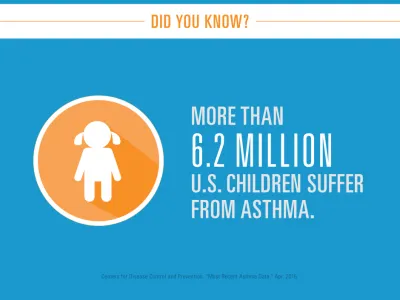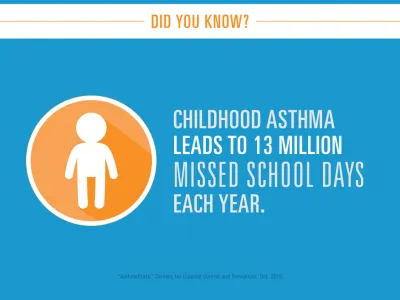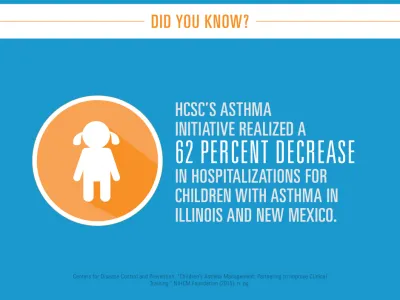How data is helping children with asthma breathe easier

For Chicago high school student Troyanna Anderson, asthma was a constant struggle.
"I used to miss a lot of school and I also used to be in the hospital frequently — every month, I was in the hospital,” Anderson explains.
Everyday occurrences like bad weather or cheerleading practice would trigger asthma attacks, which in turn cause lung spasms and breathing difficulties that hinder her ability to learn and play.
Unfortunately, Anderson is far from alone. Asthma is the most common chronic disease among American children, affecting more than 6.2 million kids and teens. Asthma attacks send millions of children to the emergency room each year and are the leading cause of school absenteeism, with 13 million missed days of school each year. The total annual cost of treating childhood asthma is $300 million.
Can cutting-edge data analysis be used to reverse these grim statistics? Health Care Service Corporation (HCSC) has found a way.
HCSC, which operates Blue Cross and Blue Shield health plans in five states, uses its medical claims data to identify neighborhoods with the highest rates of hospitalization and emergency care for asthma patients. The health plans then team up with the American Lung Association to provide monthly training and mentoring to clinics in these community "hotspots."
“I was able to learn how to properly take medication, to understand what it was doing to me and I was able to understand how my asthma worked.”
- Troyanna Anderson
The partnership has led to treatment of more than 480,000 children in three years through its Enhancing Care for Children with Asthma initiative. The project has delivered significant results. In Illinois and New Mexico, for example, hospitalizations fell 62 percent and emergency visits dropped by more than half.
The American Lung Association’s Dr. Felicia Fuller explains, “We developed a program that we’d take clinics through, to include their [doctors], nurses, medical assistants, to assist children in need so that their asthma can be controlled.”
The project also improved patients’ ability to manage their condition. Before it began, only 65 percent of asthma sufferers had documented their initial asthma severity, and fewer than 30 percent had an asthma action plan. Eighteen months later, more than 80 percent of patients had documented their asthma severity, and 60 percent had developed an action plan.
Started as a three-year initiative in 2012, the project has been extended through 2017 to include more clinics and provide more training.



